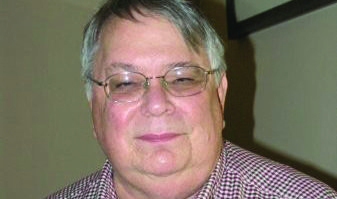One of things that I find to be true about the radio industry is the adage that “the more things change, the more they stay the same.” This certainly can be said about Belar Electronics Laboratory FMHD-1L (for “lite”), one of its newest FM/HD modulation monitors. This model continues to forge the excellence, quality and accuracy that you have come to expect from Belar, the company that cut its teeth on FM modulation monitoring.
LITE

While I focus here on the FMHD-1L, we must compare it to the “non-lite” FMHD-1 in order to understand fully what the lite version does offer.
The full-blown FMHD-1 is a 2RU modulation monitor with an LCD screen and jog dial selector on the front. The rear has eight analog outputs and three digital outputs, all assignable, along with digital and analog composite outputs. The FMHD-1L has a classic black panel with both Belar and HD Radio logos emblazoned on the front, but doesn’t share any of the audio outputs on the rear.
Similarities between the FMHD-1 and the lite version show up in the rest of the connections on the back of each piece — namely, RS-232 and Ethernet for computer communication with the equipment, four assignable relays for alarm conditions, an F Type antenna connection and two high-level BNC RF inputs grace the back of the unit.

While information from the FMHD-1 can be accessed from its 640 x 240 resolution front-panel LCD, both the full and lite models are accessible with Belar’s Wizard for Windows software, AKA WizWin. Without an LCD panel in front, the lite requires the software to generate its monitoring results. While I may have missed all of the outputs the FMHD-1 offers in a longer trial of the equipment, the ability to have multiple windows of graphical data on my computer screen from the software quelled the need for the LCD panel.
As one might expect, trimming down the feature set trims down the price as well. The retail price for the FMHD-1L comes in at $4,575. The full-featured FMHD-1 is nearly double that price at $7,200. Each model can also accept additional decoder cards (the full can accept up to three, the lite can accept one extra) at a cost of $650 each. On the full model, an expansion board is required if more than one additional decoder card is purchased. According to a published price list on Belar’s website, their automatic delay correction software (a $749 value) is included for free for a limited time.
Setup for the system, unsurprisingly, is not complicated. Placing the unit in the rack, applying power, adding an RG-6 from an antenna (or BNC from a transmitter depending on the installation location) and plugging in an Ethernet cable go a long way toward being done. After that small amount of physical work, there are some well-detailed instructions about how to change the IP address of the unit so that it meshes with your network. Last, once the WizWin software is downloaded, installed and configured, you are ready to start monitoring the modulation of any analog or HD station on the dial. I was at my laptop and ready to go about 20 minutes after the unboxing.
As a side note, due to an unrelated problem I had with my laptop in the middle of my review of the unit, I was forced to test the software on several operating systems. I tested it on both Windows XP and Windows 7, and it performed well on each platform. Although I didn’t test it on Windows 10, my experience with it so far tells me that it will run on Microsoft’s newest offering equally well. It also ran well in my primary operating system, Fedora Linux, using the WINE package. In any case, you shouldn’t have any issues finding a machine that can use the software and interface with the FMHD-1L.

When it comes to what information the FMHD-1L can provide you about your FM and HD Radio signals, along with others in your market, it becomes obvious that you spent your money well. When you connect to the monitor from within the software, you are greeted front and center with the monitored frequency and its signal strength meter. If the frequency is carrying HD Radio data, it gets locked and you are presented visually with how many HD channels are available, the HD service mode and how long it took to acquire data and audio from the channels. The feature menu becomes available with a right-click of the mouse.
Besides providing all of the standard measurements you are used to seeing from modulation monitors in both analog and HD, you can quickly see RF spectrum analysis with NRSC mask and sideband power measurements. Sometimes, instead of seeing metering as your primary display, it helps to have your signal information displayed in an X-Y type graphical format over time. The software has no problem displaying any channel characteristics in that way. This includes the ability to show 24 hours of historical data for the signal in question if necessary. One of the appealing things about the software running the FMHD-1L is that if you want to choose another feature, the previous feature window doesn’t go away. The windows can be stacked around your desktop so that you can compare and compliment graphs against each other.
GRAPHICS
Visually, each graphical element is what you would consider “high-contrast.” Any settings window headers are Windows blue and have gray backgrounds. Feature windows each have black backgrounds and white unit measurements; all of the graph indicators are standard green, yellow and red. These color combinations are all time-tested and generally give the best representation of the data being presented.

I had a quibble in regard to changing parameters in settings windows. I would have liked to have been able to click in a box and change a value from the keyboard instead of having to repeatedly left click and toggle values up or down until I got to the right value. Truthfully, you probably won’t need to change settings that often once things are set up the way that you want them, but it was a small annoyance at the beginning.
In my estimation, the real power of the lite comes into play with its network capability. Certainly, if you were inclined, you could dedicate a single computer to the unit connected with a crossover Ethernet cable or a serial connection, but once it is connected to your entire audio delivery/transmitter network, that is where it really shines. As I mentioned, you can set the unit in a rack at the studio connected to an antenna or at a transmitter site. Once the equipment is connected to your network, you immediately have access to it on the same network from any computer that has the WizWin software installed on it.
We’re fortunate in that all of the tower sites in our Birmingham, Ala., market are connected via IP radio links from our studio. One of the things that I was really anxious to try out was Belar’s automatic delay correction software that was included in the unit I was reviewing.
The delay correction software will take samples over time of both the analog and HD Radio versions of your signal and then compare them to see what time difference, if any, there is between the two pieces of audio. A number of audio processor manufacturers are included in the compatibility list for the software. Among them are Wheatstone, Omnia and Orban. The software also can communicate with GatesAir and Nautel exporters in order to correct any time differences. Whether you are affecting delays through your audio processor or through an exporter, the instructions are clear for each piece of equipment.
When using the FMHD-1L for time delay correction, the software works in two modes, aptly named auto and manual (the full blown FMHD-1 has a “direct” mode, available from the front panel). Manual mode will take the audio samples and show the time disparity between signals and allow you to make the correction via a button push in the software. Auto mode will perform the same calculations and then make the correction for you. You can include up to six separate device configurations in the settings menu in order to perform these operations on any number of processors or exporters. Finally, the delay correction software includes a multiscan mode, which allows you to have the FMHD-1L check your signals constantly for time differences from the device settings that you have entered.
Although we have Nautel transmitters and HD exporters, we don’t use them to add diversity delay to our audio. We choose to use our audio processors for that chore. The prime candidate I chose for my testing was our Wheatstone AirAura that powers our WDJC(FM) signal. Once I added the IP settings and hit the apply button, the software shook hands with our processor, and I was able to go and begin sampling the HD Radio and analog signals for time differences. There ended up being a fraction of a millisecond difference between the two signals, and I allowed the software to push the correction to our processor. The process was seamless.
I am reminded often that among all of the duties that a radio engineer has to accomplish that the primary goal is to “protect the license.” The wealth of signal information that Belar’s FMHD-1L provides at such a reasonable price should make it the first choice to accomplish that mission. Its feature set, network capability and signal delay correction, position it prominently as a candidate for any future modulation monitor purchases.
Todd Dixon is an assistant engineer at Crawford Broadcasting’s Birmingham facility and a regular RW contributor.
BELAR ELECTRONICS LABORATORY
FMHD-1L Modulation Monitor
Thumbs Up
+ Network capability gives on-site and off-site information from any computer
+ HD/analog diversity correction software can scan six station presets and correct delays
+ Well-documented, painless setup
Thumbs Down
– Data entry in several setting menus is tedious
Price: $4,575
For information, contact Mark Grant at Belar Electronics Laboratory in Pennsylvania at (610) 687-5550 or visit www.belar.com.










